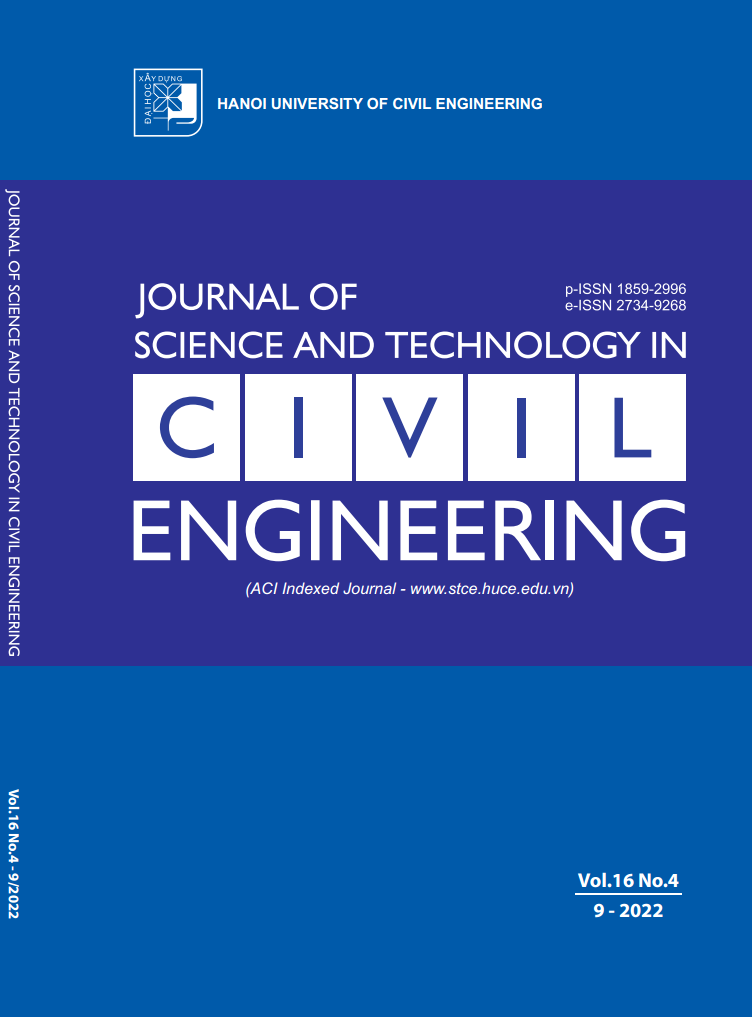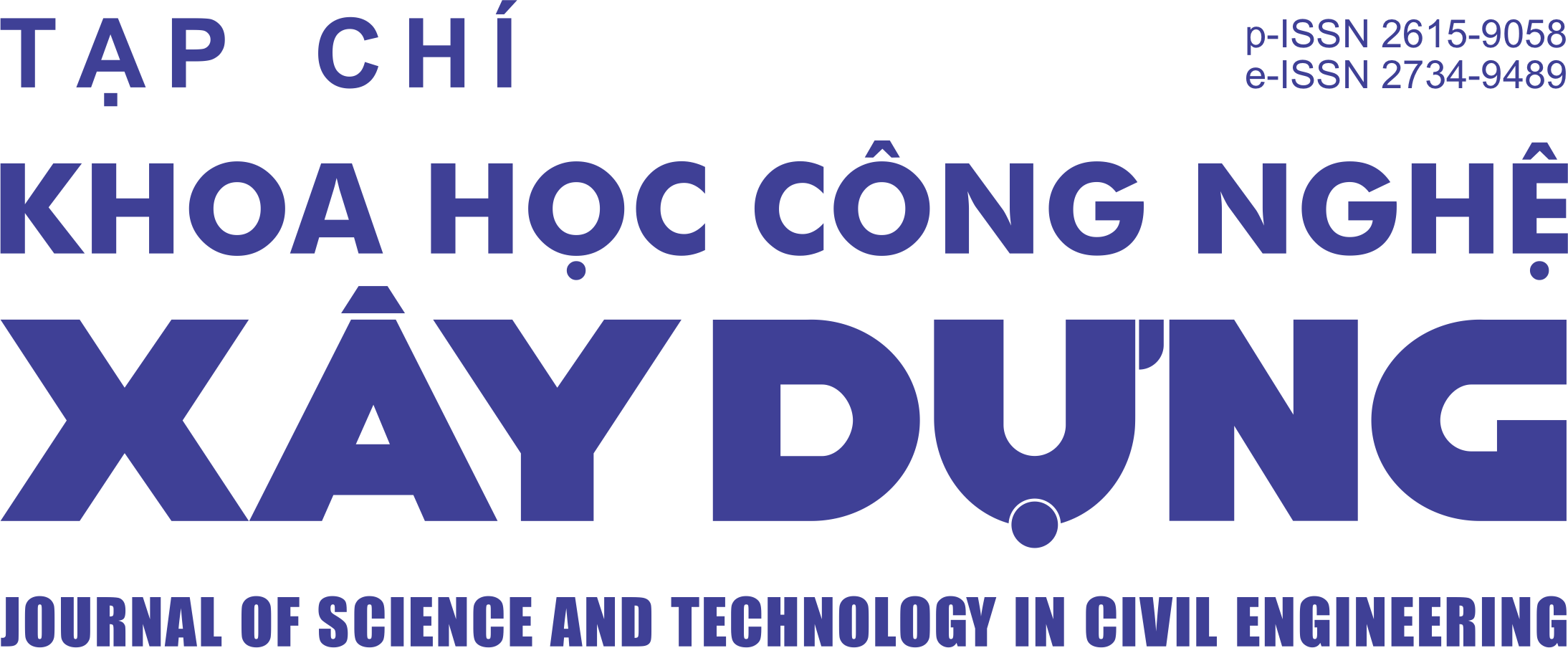A numerical analysis on bending capacity of steel pipe columns using a mechanical joint with concrete-filled steel tube
Abstract
Structural steel pipes have been applied commonly in the bridge construction for foundations or piers with many advantages such as large bending capacity, high shear resistance, and rapid construction. However, site welded joints may face critical technical matters which need to be considered for steel pipe piers during construction stage. Current solutions for pipe joints require the use of high-strength materials with machining technology to ensure accuracy, quality, and increase construction costs with substantial number of joints. Therefore, these solutions, when applied in Vietnam, will also face limitations due to the contractor’s qualification and erection technology at construction site. This study proposes a type of joint for steel pipe piers of viaducts in a mountainous region to eliminate the welding work of the steel pipe at the construction site and to provide high bearing capacity, simple construction, and cost effectiveness. Finite element analyses are conducted to investigate and verify the bending capacity of steel pipes with the proposed joint. Nonlinear material and nonlinear geometry are considered to simulate behaviors of composite action, yielding, and buckling in the structures. Finally, comparative studies of bending capacity of the steel pipe with and without joint are performed. Stress distributions and deformations of the structural components in the joint region are also observed and discussed.
Downloads
Copyright (c) 2022 Hanoi University of Civil Engineering

This work is licensed under a Creative Commons Attribution-NonCommercial-NoDerivatives 4.0 International License.
1. The Author assigns all copyright in and to the article (the Work) to the Journal of Science and Technology in Civil Engineering (JSTCE) – Hanoi University of Civil Engineering (HUCE), including the right to publish, republish, transmit, sell and distribute the Work in whole or in part in electronic and print editions of the Journal, in all media of expression now known or later developed.
2. By this assignment of copyright to the JSTCE, reproduction, posting, transmission, distribution or other use of the Work in whole or in part in any medium by the Author requires a full citation to the Journal, suitable in form and content as follows: title of article, authors’ names, journal title, volume, issue, year, copyright owner as specified in the Journal, DOI number. Links to the final article published on the website of the Journal are encouraged.
3. The Author and the company/employer agree that any and all copies of the final published version of the Work or any part thereof distributed or posted by them in print or electronic format as permitted herein will include the notice of copyright as stipulated in the Journal and a full citation to the Journal as published on the website.







